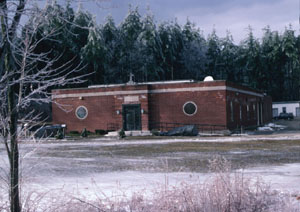Research
Research in the Department of Earth and Environmental Sciences includes a wide range of investigations into the way the Earth works and the processes that shape our evolving planet. Opportunities are available for students to work with our faculty in the following areas:
Research Concentrations

Weston Observatory
The Weston Observatory is a research and science education center that operates a 16-station regional seismic network that records data on earthquakes in the northeast, as well as distant earthquakes. The facility offers students a unique opportunity to work on exciting projects with modern, sophisticated, scientific research equipment in a number of different areas of scientific and environmental interest.

